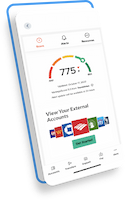For most of us, a checking account is kind of like your financial home base: it’s where you may direct deposit your paychecks and the pool from which you may pay your mortgage, your credit card, and your electric bill. You might also make regular point-of-sale purchases using a debit card.
With all that coming and going, you might be wondering how much money you should keep in your checking account at all times — and how much you might want to shuffle off to a savings or investment account. Let’s take a look.
How much should I keep in my checking account?
The short answer to this question is: “it depends.” How much money do you spend on everyday expenses each month, and when do those bills come through? How much money do you earn? Do you have just one checking account you use for everything, or several set up for different purposes?
Some people decide on a specific amount of money they don’t let their checking account balance dip under, such as $1,000 or $5,000. Others might aim to keep one to two months of living expenses in their checking account at all times. (Not sure how much your monthly living expenses are? Time to get busy making a budget! Quontic’s free Spending Forecast and Household Cash Flow calculators may help.)
One thing’s for sure: you may want to keep enough money in your checking account to avoid overdrafting — or accidentally spending more than you have in your account. Although many of us haven’t written (or, therefore, bounced) a check in years, chances are you use a debit card, and if you accidentally spend more than you actually have, you may incur an overdraft fee. These fees may add up very quickly if you aren’t paying attention.
Additionally, your bank may have certain minimum balance requirements in order to keep your account free of a monthly maintenance charge — or open at all.
Do checking accounts earn interest?
Why not keep all your money in your checking account?
Well, for one thing, you may be interested in earning interest — it’s always nice when your money gets fruitful and multiplies without any effort from you. And while the interest rates might not be as high as they are on an investment account, or even most savings accounts, interest-bearing checking accounts are available, if you know where to look. (Hint: if you’re looking here, you possibly already do!)
According to the FDIC, the average interest checking account rate is 0.03%, while the average savings account rate is 0.06%1. Quontic offers a high-interest checking account with an earning potential of up to 1.01% APY2, and our high-yield savings account offers 0.75% APY3.
Of course, some maystand to earn a substantially higher interest rate on the stock market — but that money is also subject to the risk of total loss, whereas eligible deposit accounts, are FDIC insured up to the standard $250,0004 — or NCUA insured5, if you’re working with a credit union. As useful and lucrative as investing should be, you may want to keep some funds at hand for both daily expenses and short- to medium-term savings goals.
Speaking of which…
What about an emergency fund?
You might already know how some deem it important to have an emergency fund. After all, surprises happen — including expensive ones. Having extra money on hand could keep you from going into debt to pay for a medical bill or a car repair.
You might also have heard that it is recommended to keep three to six months’ worth of monthly expenses as emergency savings, which might sound like a lofty goal if you’re living paycheck to paycheck. (Don’t feel bad: more than half of Americans do, including almost 40% of us with incomes over $100,000. Personal finance is hard!)
Still, everyone starts somewhere. You may want to commit to saving what you can each pay period — whether it’s $25 or $250 — and stashing it away for a rainy day. Many people choose to use a savings account (rather than a checking account) for this purpose, since it’s a little harder to spend money in a savings account. Nonetheless it might be beneficial to have the money “liquid” for when you need it. Unlike a retirement account, which you may not be making withdrawals from until the future, this is cash you might need to get your hands on immediately. Additionally, stashing it under a mattress is no good: it won’t even earn enough interest to keep up with inflation.
Use Quontic’s free Emergency Fund calculator to help you get started building your rainy day nest egg.
Most consumers find it easiest to have both a checking account and a savings account — or several of each. We have plenty of bank account options and financial products to choose from here at Quontic, including CDs (certificates of deposit) and Money Market accounts, too. Not sure about online banking? Our nationwide network of ATMs makes it easier to access cash when you need it, and our team of customer service professionals is standing by to help with any other questions you might have.
Disclaimer:
This is not financial advice, nor should it constitute or be construed as instruction for any individual reader, or group of readers, to act or make a decision in any financial capacity.
Seeking independent, professional consultation from a qualified and licensed expert is always the optimum avenue in making financial decisions.
2High Interest Checking Account is a conditional tiered variable rate account. You must deposit $100.00 to open this account. The conditional interest rate and annual percentage yield is based on (A) fulfilling the minimum qualifying activity requirements per statement cycle, which are (1) a daily balance less than or equal to $1,000,000.00 and (2) 10 qualifying Point of Sale debit card transactions equal to or over $10.00 per transaction, and (B) the portion of the balance within the following specified tiers: (a) If the minimum qualifying activity requirement is fulfilled and your daily balance is $150,000 or less, the interest rate paid on the entire balance will be 1.00% with an annual percentage yield of 1.01%; (b) If the minimum qualifying activity requirement is fulfilled, an interest rate of 0.35% will be paid only for that portion of your daily balance that is greater than $150,000 but not exceeding the amount of $1,000,000.00. The annual percentage yield for this tier will range from 1.01% to 0.45%, depending on the balance in the account; and (c) If the minimum qualifying activity requirement is fulfilled, an interest rate of 0.00% will be paid only for that portion of your daily balance that is greater than $1,000,000.00 The annual percentage yield for this tier will range from 0.45% to 0.00%, depending on the balance in the account. If the qualifying activity requirement is NOT fulfilled, the interest rate paid on the entire balance will be 0.01% with an annual percentage yield of 0.01%. Ask for details. Additional terms, conditions, fees & exclusions may apply. Rates may change without notice. If the account is closed before interest and/or bonus is credited, accrued interest and/or bonus may be forfeited for that statement cycle. Fees could reduce earnings. The following activities are not considered qualifying POS debit card transactions and do not count toward earning rewards: ATM- processed transactions; transfers between accounts; purchases made with debit cards not issued by our bank; cash over portions of point-of-sale transactions; Peer-to-Peer (P2P) payments (such as Apple Pay Cash*); loan payments or account funding made with your debit card and purchases made using third-party payment accounts. Transactions may take one or more business days from the date the transaction was made to post and settle to an account. Online Account Opening is only available to consumers. Data connection required to open an account online. Carrier fees may apply. Application is subject to approval. Information is accurate as of April 1, 2022 and may change without notice.
3High Yield Savings Annual Percentage Yield (APY). Ask for details. You must deposit $100.00 to open this account. Additional terms, conditions, fees & exclusions may apply. Rates may change without notice. If the account is closed before interest and/or bonus is credited, accrued interest and/or bonus may be forfeited for that statement cycle. Fees could reduce earnings. Subject to eligibility & further review. Deposit limits & other restrictions may apply. Information is accurate as of November 21, 2023 and may change without notice.
4FDIC insurance is applicable to eligible deposit accounts and up to the maximum allowed by law . Learn more at https://www.fdic.gov/resources/deposit-insurance/financial-products-insured/index.html.
5Learn more about NCUA insured accounts, which are applicable to eligible accounts and up to the maximum allowed. https://www.mycreditunion.gov/share-insurance





